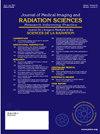“Digital Twin” Intelligent Management of Large Medical Equipment Based On Internet of Things Platform
IF 1.3
Q3 RADIOLOGY, NUCLEAR MEDICINE & MEDICAL IMAGING
Journal of Medical Imaging and Radiation Sciences
Pub Date : 2024-10-01
DOI:10.1016/j.jmir.2024.101481
引用次数: 0
Abstract
Background
The implementation of China's Healthy China strategy and the development of new medical infrastructure have led to the widespread deployment of various medical equipment across all levels of healthcare institutions. These instruments serve critical functions such as health checkups, disease screening, diagnosis, treatment, and therapeutic evaluation, forming the essential backbone for a hospital's normal operation. Nevertheless, the challenge persists in transitioning from Breakdown Maintenance to Prejudgment due to the vast and diverse array of medical equipment.
Method
Utilizing Internet of Things (IoT) digital twin technology, a comprehensive evaluation management system for large medical equipment is established. The system parses operational logs to fully reconstruct the dynamic usage patterns of the equipment. Standard data interfaces are interconnected with existing information systems to create a real, objective, automated, and normalized platform for analyzing equipment operation, usage, quality control, and efficiency data. This platform facilitates equipment monitoring, early warning, quality control management, and decision-making applications.
Result
Real-time remote monitoring of equipment operating status is achieved 24/7, providing immediate awareness of current equipment states such as shutdown, standby, and downtime. This enhances the quality and efficiency of equipment operation and maintenance. Different levels of risk warnings are pushed, guiding biomedical engineers to take timely and effective measures. Predictive estimation of the lifespan of core components enables proactive, foresighted equipment maintenance management, effectively controlling maintenance costs. Real-time remote monitoring of core parameters allows for efficient intelligent inspections, enhancing maintenance efficiency and reducing downtime.
Conclusion
The system enables real-time remote monitoring of medical equipment, achieving dynamic and refined management. It enhances operational quality, efficiency, and decision-making capabilities by integrating IoT and cloud platforms into the management and early warning system for major medical equipment in large hospitals.
基于物联网平台的大型医疗设备 "数字孪生 "智能管理
背景中国健康中国战略的实施和新型医疗基础设施的发展,促使各级医疗机构广泛部署各种医疗设备。这些设备承担着健康体检、疾病筛查、诊断、治疗和疗效评估等重要功能,是医院正常运营的重要支柱。方法利用物联网(IoT)数字孪生技术,建立大型医疗设备综合评估管理系统。该系统通过解析运行日志,全面重建设备的动态使用模式。标准数据接口与现有信息系统互联,为分析设备运行、使用、质量控制和效率数据创建了一个真实、客观、自动化和规范化的平台。该平台有助于设备监控、预警、质量控制管理和决策应用。结果实现全天候实时远程监控设备运行状态,即时了解当前设备状态,如停机、待机和故障时间。这提高了设备运行和维护的质量和效率。推送不同级别的风险警告,指导生物医学工程师采取及时有效的措施。对核心部件的使用寿命进行预测性估算,可实现主动、前瞻性的设备维护管理,有效控制维护成本。实时远程监控核心参数,实现高效智能巡检,提高维护效率,减少停机时间。通过将物联网和云平台整合到大型医院主要医疗设备的管理和预警系统中,提高了运行质量、效率和决策能力。
本文章由计算机程序翻译,如有差异,请以英文原文为准。
求助全文
约1分钟内获得全文
求助全文
来源期刊

Journal of Medical Imaging and Radiation Sciences
RADIOLOGY, NUCLEAR MEDICINE & MEDICAL IMAGING-
CiteScore
2.30
自引率
11.10%
发文量
231
审稿时长
53 days
期刊介绍:
Journal of Medical Imaging and Radiation Sciences is the official peer-reviewed journal of the Canadian Association of Medical Radiation Technologists. This journal is published four times a year and is circulated to approximately 11,000 medical radiation technologists, libraries and radiology departments throughout Canada, the United States and overseas. The Journal publishes articles on recent research, new technology and techniques, professional practices, technologists viewpoints as well as relevant book reviews.
 求助内容:
求助内容: 应助结果提醒方式:
应助结果提醒方式:


